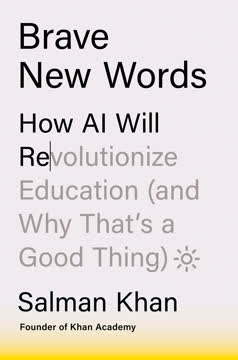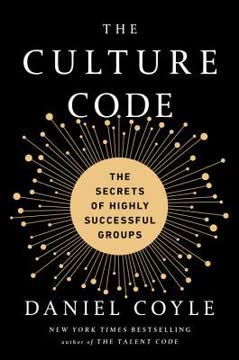つの重要なポイント
1. 官僚主義は人間の潜在能力と組織のパフォーマンスを抑制する
官僚主義は私たちの購買力を増大させたが、魂を萎縮させた。
官僚主義のコストは驚異的である。 米国だけでも、不要な管理層、コンプライアンスのための雑務、そして抑制されたイノベーションにより、年間約2.6兆ドルが無駄にされている。財政的なコストを超えて、官僚主義は以下のような影響を及ぼす:
- 権力をトップに集中させ、意思決定を遅らせる
- 仕事を標準化し、創造性と自主性を制限する
- コラボレーションを妨げる硬直したサイロを作る
- メリトクラシーを損なう政治的行動を生む
人間への影響は深刻である。 官僚主義は人々を多様な才能を持つ個々の存在ではなく、交換可能なリソースとして扱う。それは:
- フロントラインの労働者から自律性を奪う
- 成長や意味のある貢献の機会をほとんど提供しない
- 情熱とエンゲージメントを打ち砕く
2. ヒューマノクラシーは従業員をエンパワーメントし、彼らの能力を最大限に引き出す
私たちは道具を形作り、その後道具が私たちを形作る。
ヒューマノクラシーは人を第一に考える。 それは、組織が人間の貢献を最大化することで繁栄するという信念に基づいている。主要な原則には以下が含まれる:
- 分散型の権限と意思決定
- 固定された職務記述ではなく、個々の才能に基づいた役割
- チームが自分たちの目標と方法を設定する権限を持つ
- リスクを取ることと失敗から学ぶことを奨励する文化
実際の例がその力を証明している。 Nucor、Haier、Morning Starのような企業は、ヒューマノクラシーを実践している:
- Nucorの生産チームはスケジューリング、採用、さらには主要な設備購入を管理する
- Haierの4,000以上の「マイクロエンタープライズ」は内部スタートアップとして運営される
- Morning Starには管理者がいない。従業員は「同僚理解書」を交渉して責任を定義する
これらの企業は、生産性、イノベーション、従業員のエンゲージメントなどの指標で一貫して同業他社を上回っている。
3. 分散型の所有権と市場原理がイノベーションと機敏性を促進する
人々が仕事からもっと多くを得るに値すると信じ、より動的で創造的な機関が私たちにとってより良いと信じるなら、世界を前進させるためにできることはたくさんある。
内部市場は創造性を解き放つ。 組織内に市場のダイナミクスを導入することで、企業は:
- 資源をより効率的に配分する
- 変化する状況に迅速に対応する
- 意思決定のために集団知能を活用する
実際の応用例には以下が含まれる:
- 従業員のアイデアのためのクラウドファンディングプラットフォーム(例:IBMのiFundIT)
- プロジェクトの結果を予測するための内部予測市場
- チームが内部サービスを「ショッピング」できるようにし、サポート機能間で競争を生む
所有者のマインドセットが重要である。 従業員が所有者のように考え、行動すると:
- 問題を解決し、機会を追求するためにより多くのイニシアティブを取る
- 長期的な成功により投資する
- より大きな利益のために短期的な犠牲を厭わない
Vinci(建設)やHandelsbanken(銀行)のような企業は、地域単位に完全なP&L責任を与え、組織全体で起業家的な行動を促進している。
4. メリトクラシーが影響力と報酬を決定すべきである
権力は個人の地位ではなく、理論に基づくべきである。
従来の階層構造には欠陥がある。 それはしばしば:
- 政治的スキルに基づいて昇進させる
- 単一のマネージャーの意見に過度の重みを与える
- 個々の能力の微妙な違いを捉えられない
真のメリトクラシーには新しいアプローチが必要である:
- ピアベースのパフォーマンス評価(例:W.L. Goreの貢献ランキングシステム)
- スキルと貢献の透明なデータ(例:Bridgewater Associatesの「Dot Collector」アプリ)
- タイトルではなく、実証された専門知識に基づく意思決定
メリトクラシーの利点:
- 報酬を価値創造に一致させる
- 継続的なスキル開発を動機付ける
- 政治を減少させ、信頼を増加させる
5. 強いコミュニティを構築することでエンゲージメントとコラボレーションを促進する
私たちは私たちが奉仕する原因によって定義される。私たちのアイデンティティは私たちが直面する挑戦の中で発見される。
コミュニティは強力な力である。 強いコミュニティ意識を育む組織は以下の利点を享受する:
- 高いレベルの自主的な努力
- 境界を越えたコラボレーションの改善
- 挑戦に直面したときのより大きな回復力
コミュニティ構築の重要な要素:
- 利益を超えた共有目的
- 透明性とオープンなコミュニケーション
- 多様な貢献の相互尊重と認識
- ピアツーピアのアカウンタビリティ
Southwest Airlinesはコミュニティの模範である。 その「LUV」文化は以下の方法で業界をリードするパフォーマンスを推進している:
- 従業員を活気づける航空旅行の民主化という使命
- 共感を育むための広範なクロストレーニングとジョブシャドウイング
- 職場での個性と楽しさの祝福
- すべての人の利益を一致させる強力な利益共有
6. 新しいアイデアと実験へのオープンさが進歩を加速する
ひらめきは事前にプログラムすることはできない。稲妻は合図で打つことはない。しかし、避雷針を建てることはできる。
閉鎖的なシステムは停滞する。 組織は以下のためにオープンさを育む必要がある:
- 新たなトレンドや機会を見つける
- 時代遅れの仮定に挑戦する
- 問題解決のために多様な視点を活用する
オープンさを高める実際的な方法:
- クロスファンクショナルなアイデア共有プラットフォーム
- 顧客共創イニシアティブ
- スタートアップや学界とのパートナーシップ
- 内部クラウドソーシングとハッカソン
実験はイノベーションの鍵である。 企業は以下を行うべきである:
- 誰でも小さな実験を簡単に行えるようにする
- 「スマートな失敗」から学ぶことを祝う
- データを使用して迅速に反復し、成功したアイデアをスケールする
Amazonの「マイクロサービス」アプローチによるソフトウェア開発やIntuitの「Design for Delight」イノベーションプログラムは、オープンさと実験が継続的な改善を促進する方法を示している。
7. パラドックスを受け入れることで、競合する優先事項のバランスを取る
多様性だけが多様性を吸収できる。
単純なトレードオフは可能性を制限する。 組織はしばしば以下のような二者択一の考えに陥る:
- 効率性 vs. イノベーション
- 中央集権的な管理 vs. 地方の自律性
- 短期的な結果 vs. 長期的な投資
パラドックスを受け入れることで新たな可能性が開かれる。 それは企業に以下を可能にする:
- 矛盾する目標を同時に追求する
- 従来のトレードオフを超えた創造的な解決策を見つける
- 複雑な環境に柔軟に適応する
パラドックス管理の例:
- Haierはマイクロエンタープライズモデルを通じて起業家的な自由と整合性を両立させている
- Handelsbankenは分散型の意思決定と厳格なリスク管理を両立させている
- トヨタのリーン生産システムは標準化と継続的改善を組み合わせている
8. 誰でもアクティビストとハッカーのように考えることで変革をリードできる
変化は単に遅いだけでなく、気弱でもある。
従来の変革管理は不十分である。 トップダウンのプログラム的アプローチはしばしば:
- 変化の速い環境では遅すぎる
- ニュアンスに欠け、フロントラインの従業員を引き込むことができない
- 抵抗を引き起こし、熱意を欠く
アクティビストの思考は草の根の変革を推進する。 主要なマインドセットには以下が含まれる:
- 個人的な利益を超えた目的への情熱
- 現状に挑戦する意欲
- コアリションを構築し、サポートを動員するスキル
ハッカーのメンタリティは進歩を加速する。 ハッカーは:
- 許可を待たずにイニシアティブを取る
- アイデアを迅速にテストするために小さな実験を行う
- 学びをオープンに共有し、他者を刺激する
アクティビズムとハッキングの組み合わせは強力である。 英国の国民保健サービスにおけるHelen Bevanの「Change Day」のような例は、ボトムアップの実験的アプローチが大規模な変革を推進する方法を示している。
9. リーダーシップと変革管理の再考は変革に不可欠である
シニアマネージャーはシステム変革の複雑さを受け入れながら、徹底的で高度に規定された変革プログラムを作成する誘惑に抵抗しなければならない。
従来のリーダーシップモデルは時代遅れである。 それはしばしば:
- リーダーシップを階層的な地位と同一視する
- 管理スキルに焦点を当て、変革を促進する能力を軽視する
- フロントラインの従業員の潜在能力を過小評価する
新しいリーダーシップのパラダイムが必要である。 それは以下を行うべきである:
- 組織全体にリーダーシップの責任を分散させる
- ムーブメントを構築し、実験を促進するスキルを開発する
- 他者の潜在能力を引き出す能力でリーダーを評価する
変革は継続的かつ分散型でなければならない。 組織は以下を行うべきである:
- 誰でも変革努力を開始し、リードする権限を持つ
- 単一のプログラムではなく、複数の並行実験を実行する
- 組織全体の再構築に従業員全員を巻き込むためのオープンプラットフォームを使用する
これらの新しいリーダーシップと変革アプローチを受け入れることで、企業は急速に進化する環境で繁栄するために必要な適応力とイノベーション能力を構築することができる。
最終更新日:
FAQ
What's Humanocracy about?
- Human-Centric Focus: Humanocracy by Gary Hamel and Michele Zanini advocates for organizations that prioritize human potential over bureaucratic structures, arguing that traditional systems stifle creativity and innovation.
- Critique of Bureaucracy: The book critiques bureaucracy for undermining resilience and adaptability, presenting a case for dismantling these practices to unleash employee capabilities.
- Transformation Roadmap: It offers a roadmap for transitioning to human-centric organizations, emphasizing principles like ownership, meritocracy, and community, illustrated with examples from companies like Nucor and Haier.
Why should I read Humanocracy?
- Timely Insights: In an era of rapid change, Humanocracy provides insights on how organizations can adapt and thrive, making it relevant for leaders aiming to foster innovation.
- Practical Strategies: The book offers actionable strategies that can be applied in various organizational contexts, serving as a practical guide for real-world application.
- Inspiring Case Studies: It includes examples of companies that have successfully adopted human-centric practices, demonstrating the tangible benefits of such transformations.
What are the key takeaways of Humanocracy?
- Dismantling Bureaucracy: The book emphasizes the need to dismantle bureaucratic structures that hinder human potential, arguing that bureaucracy is a drag on innovation.
- Empowerment and Ownership: It highlights the importance of empowering employees and fostering a sense of ownership, leading to more creative and effective contributions.
- Meritocracy and Community: Humanocracy advocates for a meritocratic environment and a strong sense of community, resulting in higher engagement and better performance.
What are the best quotes from Humanocracy and what do they mean?
- “Bureaucracy is soul crushing.”: This quote captures the authors' view that bureaucratic systems dehumanize employees and stifle creativity, urging a rethink of management practices.
- “We don’t build steel, we build people.”: From Nucor’s philosophy, this quote underscores the importance of focusing on human development over production metrics, leading to better outcomes.
- “The organization is the instrument—it’s the vehicle human beings use to better their lives.”: This reflects the core principle of Humanocracy, viewing organizations as tools for human flourishing.
How does Humanocracy define bureaucracy and its impact on organizations?
- Definition of Bureaucracy: Bureaucracy is characterized by hierarchical structures, rigid rules, and centralized decision-making, often leading to inefficiencies.
- Negative Impact: It creates a culture of compliance rather than innovation, resulting in disengaged employees and slow decision-making processes.
- Need for Change: The book emphasizes dismantling bureaucratic structures to unlock employee potential and create agile, responsive organizations.
What is the concept of Humanocracy in Humanocracy?
- Human-Centric Approach: Humanocracy prioritizes human potential and creativity over bureaucratic control, creating environments where employees can thrive.
- Decentralization of Power: It emphasizes decentralizing decision-making, allowing frontline employees to take ownership, leading to faster decisions and innovation.
- Focus on Contribution: The model shifts focus from compliance to maximizing individual contributions, fostering a culture of experimentation and learning.
How does Humanocracy suggest organizations can transition from bureaucracy?
- Start with Principles: Begin by establishing core principles that prioritize human potential, such as ownership, meritocracy, and community.
- Empower Employees: Give employees autonomy and decision-making authority by flattening hierarchies and reducing management layers.
- Encourage Experimentation: Create a culture that supports experimentation and learning from failures, allowing employees to test new ideas without fear.
What role does community play in a Humanocracy?
- Foundation of Support: Community fosters a supportive environment where employees feel valued and connected, enhancing collaboration.
- Shared Goals: It aligns employees around common goals, increasing motivation and engagement, contributing to a larger purpose.
- Emotional Well-Being: Community contributes to emotional well-being, crucial for maintaining productivity and job satisfaction.
How does Humanocracy address the concept of meritocracy?
- Definition of Meritocracy: Meritocracy rewards individuals based on contributions and capabilities rather than position or tenure, fostering a culture of excellence.
- Aligning Authority with Competence: Decision-making authority should align with expertise, ensuring qualified individuals make critical decisions.
- Reducing Bias in Promotions: Focus on demonstrated performance and impact to create an equitable and motivating work environment.
What is the significance of paradox in Humanocracy?
- Understanding Paradox: Paradoxes, like freedom vs. control, are inherent in organizations; embracing them helps navigate complexity.
- Balancing Competing Priorities: Recognize and manage competing priorities to find innovative solutions satisfying multiple objectives.
- Cultivating Tolerance for Ambiguity: Encourage a culture that tolerates ambiguity and open dialogue about conflicting goals, fostering resilience.
How does Humanocracy define experimentation?
- Culture of Experimentation: Experimentation is a fundamental aspect encouraging employees to test new ideas and learn from failures.
- Empowerment to Experiment: Empower all employees to run experiments, democratizing the process and engaging a diverse workforce.
- Learning from Failure: Accept failure as part of innovation, creating an environment where employees feel safe to take risks.
How can I start implementing the principles of Humanocracy in my organization?
- Begin with Self-Reflection: Reflect on personal behaviors that perpetuate bureaucracy and commit to changing those habits.
- Engage Colleagues: Discuss Humanocracy principles with colleagues to build a coalition for change and create momentum.
- Run Local Experiments: Implement small-scale experiments to test principles in your environment, demonstrating benefits of a human-centric approach.
レビュー
本書『ヒューマノクラシー』は、官僚主義への批判と人間中心の組織を提唱する点で、主に好意的な評価を受けている。読者は、ケーススタディ、原則、そして変革を実行するための実践的な提案を高く評価している。洞察力、読みやすさ、そしてインスピレーションを与える質に対して称賛の声が多い。一方で、冗長性、古い例、科学的厳密さの欠如といった批判もある。総じて、現代の職場の課題に対して思考を刺激し、関連性があると評価されているが、すべての組織に適用できるかどうかについては疑問を呈する声もある。
Similar Books
















